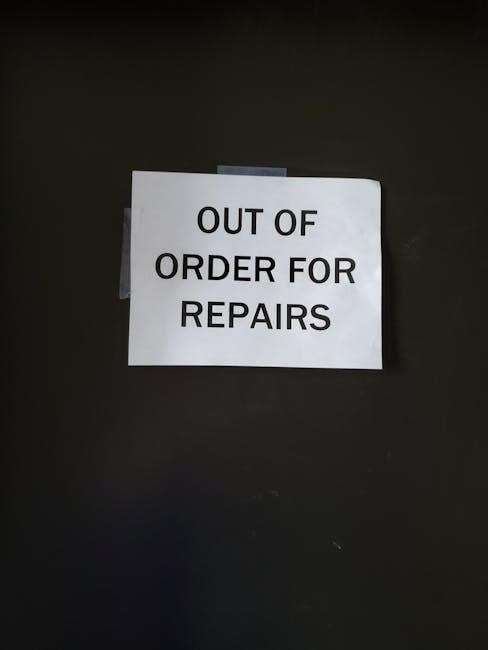The Notice of Intent to Lien in California is a formal document alerting property owners of a potential mechanics lien due to unpaid debts for construction work or services.
1.1 Overview of the Notice of Intent to Lien
The Notice of Intent to Lien is a formal warning sent to California property owners, signaling the intent to file a mechanics lien due to unpaid debts from construction work or services. It serves as a legal record of the debt, offering the owner a chance to settle before a lien is filed. Available as a downloadable PDF, it is a recommended step to encourage prompt payment.
1.2 Importance of the Notice in California Construction Law
The Notice of Intent to Lien holds significant importance in California construction law as a strategic tool for contractors and subcontractors to assert payment rights. While not mandatory, it encourages prompt settlement of debts, preserving the right to file a mechanics lien. This document creates a legal record, demonstrating a genuine attempt to resolve disputes amicably, and maintains professional relationships by providing owners an opportunity to pay before escalating the matter.

Key Elements of a California Notice of Intent to Lien
A California Notice of Intent to Lien must include the parties involved, a detailed description of the work or services provided, the amount owed, and a clear property description.
2.1 Parties Involved in the Notice
The Notice of Intent to Lien in California involves the lien claimant (e.g;, contractors, subcontractors, or suppliers) and the property owner. The claimant must clearly identify themselves and the owner, ensuring both parties are aware of the debt and the potential lien. This clarity helps prevent disputes and ensures all stakeholders understand their roles and obligations in resolving the unpaid debt.
2.2 Description of Work or Services Rendered
The Notice of Intent to Lien must include a detailed description of the work or services provided, such as labor, materials, or equipment furnished. This section should specify the nature of the services, the time period during which they were rendered, and the project location. A clear and accurate description ensures transparency and helps prevent disputes, making it easier for all parties to understand the basis of the claim.
2.3 Amount of Debt Owed
The Notice of Intent to Lien must clearly state the specific amount of debt owed for the work or services rendered. This includes unpaid invoices, labor costs, materials, and any associated fees. The debt amount should be precisely calculated and itemized to avoid ambiguity. Accurately specifying the total debt owed is essential for maintaining the validity of the claim and ensuring compliance with California lien laws. This transparency also helps prevent potential disputes;
2.4 Property Description
The Notice of Intent to Lien must include a detailed description of the property affected by the lien. This includes the property address, legal description, and any identifying features. The description ensures the lien is properly recorded and enforced against the correct property. Accuracy in the property description is critical to establish a valid claim and prevent disputes. It also helps the property owner understand which assets are at risk due to the unpaid debt.

Legal Requirements for Serving the Notice
The Notice of Intent to Lien must be served promptly, typically 10-30 days before filing a mechanics lien, though California law does not mandate a strict deadline.
3.1 Deadline for Serving the Notice
California law does not impose a strict deadline for serving the Notice of Intent to Lien. However, it is typically recommended to serve the notice 10 to 30 days before filing a mechanics lien. This timeframe provides the property owner sufficient opportunity to settle the debt, avoiding the need for further legal action. Timely service ensures clarity and fairness in the process.
3.2 Proper Delivery Methods
The Notice of Intent to Lien in California must be delivered through proper methods to ensure legal validity. Common methods include certified mail with return receipt, personal delivery, or overnight courier. Proof of delivery, such as a signed acknowledgment or tracking information, is essential to confirm the property owner received the notice. Proper delivery ensures the process is legally binding and maintains the integrity of the lien filing process.
Benefits of Serving a Notice of Intent to Lien
Serving a Notice of Intent to Lien encourages prompt payment, avoids lien filing, and preserves legal rights, ensuring contractors receive fair compensation for their work.
4.1 Encouraging Prompt Payment
A Notice of Intent to Lien acts as a formal warning to property owners, creating urgency to settle unpaid debts. This often prompts immediate payment to avoid legal complications. By clearly stating the intention to file a mechanics lien, it motivates owners to resolve disputes quickly, ensuring contractors receive fair compensation without delays. This proactive step helps maintain cash flow and reduces the need for further legal action.
4.2 Preserving Lien Rights
The Notice of Intent to Lien plays a crucial role in preserving lien rights by formally alerting property owners of unpaid debts. It ensures contractors and suppliers maintain their legal ability to file a mechanics lien if payment isn’t received. Serving this notice demonstrates compliance with California’s construction laws and strengthens the position of claimants in case further legal action becomes necessary to recover owed amounts.
4.3 Maintaining Contractor-Client Relationships
The Notice of Intent to Lien helps preserve professional relationships by providing a formal yet non-confrontational way to address unpaid debts. It serves as a warning to property owners, encouraging payment without escalating to a lien. This approach demonstrates a commitment to resolving disputes cooperatively, fostering trust and maintaining positive working relationships between contractors and clients. It emphasizes professionalism and a preference for amicable resolutions.
How to Download and Complete the Notice of Intent to Lien Form
The Notice of Intent to Lien form can be downloaded as a PDF from official legal websites or construction resources. Fill it with project details, debt amount, and property description, ensuring accuracy for legal validity.
5.1 Availability of the Form in PDF Format
The Notice of Intent to Lien form is readily available in PDF format on official legal websites and construction resource platforms. It can be downloaded for free, allowing contractors and lienholders to easily access and print the document. The PDF format ensures compatibility with most devices and software, making it simple to fill out manually or using a PDF editor. This accessibility streamlines the process of preparing and submitting the notice.
5.2 Steps to Fill Out the Form Correctly
Filling out the Notice of Intent to Lien form requires precise information. Start by entering the property owner’s details, followed by a detailed description of the work or services provided. Include the total amount owed and a clear property description. Ensure all fields are completed accurately to avoid delays. Review the form for errors before printing and serving it to the property owner as required by California law.
5.3 Resources for Obtaining the Form
The Notice of Intent to Lien form can be downloaded from official California government websites or legal resource platforms. Many construction associations and legal aid sites offer free PDF templates. Additionally, online legal document providers often supply customizable versions tailored to California’s specific requirements. Ensure the form is obtained from a reputable source to guarantee compliance with state laws and regulations.

Sample Content of a Notice of Intent to Lien
A sample Notice of Intent to Lien includes the property address, description of unpaid work/services, amount owed, and a warning of potential lien filing if payment isn’t made.
6.1 Template Structure
The template typically includes sections for the property owner’s name, property address, description of work/services, amount owed, and a notice period. It also outlines the consequences of non-payment, such as filing a mechanics lien. The structure ensures clarity and compliance with California’s legal requirements, making it easier to understand and act upon. Proper formatting is essential for legal validity and effectiveness.
6;2 Sample Wording and Phrases
Sample wording includes phrases like “This Notice serves as formal intent to file a mechanics lien” and “Payment of [$Amount] is due immediately to avoid further action.” Phrases emphasize the unpaid debt, the property address, and the legal consequences of non-payment. The tone is formal yet clear, ensuring the recipient understands the urgency and potential legal implications of not resolving the debt promptly.
Consequences of Not Paying After the Notice
Failing to pay after the Notice of Intent to Lien may result in a mechanics lien being filed, negatively impacting the property owner’s credit and financial standing.
7.1 Filing a Mechanics Lien
Filing a mechanics lien after the Notice of Intent to Lien is a legal process that creates a public record claim against the property for unpaid debts. This lien can hinder property sales, refinancing, or transfers until resolved. It may also lead to foreclosure proceedings if the debt remains unpaid, further complicating the property owner’s financial situation and credit standing.
7.2 Impact on Property Owner’s Credit
A Notice of Intent to Lien can significantly impact a property owner’s credit score, as it becomes a public record. This may hinder their ability to obtain loans or engage in real estate transactions. Credit agencies often view liens as serious financial issues, potentially lowering the owner’s creditworthiness. The lien remains in effect for up to ten years, creating long-term financial consequences until the debt is resolved.

Correcting Mistakes in the Notice
Mistakes in the Notice of Intent to Lien must be corrected promptly. Revisions should be made, and the updated document should be resubmitted to avoid legal complications and demonstrate accountability.
8.1 Procedure for Revisions
To correct mistakes in the Notice of Intent to Lien, identify the error, revise the document accurately, and resubmit it to the appropriate authorities promptly. Ensure the updated form reflects the correct information and is properly formatted. The revised Notice should be served to all relevant parties, maintaining compliance with California’s legal standards. Accuracy is crucial to avoid delays or legal disputes. Use a downloadable PDF template to ensure proper formatting and clarity. Always include the date and your signature to validate the revised document.
8.2 Importance of Accuracy
Accuracy in the Notice of Intent to Lien is crucial to ensure the document’s validity and enforceability. Errors can lead to legal challenges, delays, or even dismissal of the lien claim. Proper details, such as the correct property description, amount owed, and party information, must be included to maintain credibility. Inaccuracies can harm your case and professional reputation, emphasizing the need for careful preparation and review before submission. Always use a reliable PDF template to minimize mistakes and ensure compliance with California’s legal requirements.
The Notice of Intent to Lien in California is a critical tool for securing payment and protecting rights. Use a reliable PDF template to ensure accuracy and compliance with state laws.
9.1 Summary of Key Points
The Notice of Intent to Lien in California is a formal document alerting property owners of unpaid debts for construction work or services. It encourages prompt payment and preserves lien rights. While not mandatory under California law, it is highly effective in resolving disputes without filing a mechanics lien. Contractors and subcontractors should use a PDF template to ensure compliance with legal requirements and maintain professional relationships. This document is a crucial step in protecting your rights and securing payment for completed work.
9.2 Final Thoughts on the Notice of Intent to Lien
The Notice of Intent to Lien is a strategic tool for contractors and subcontractors in California to secure payment for their work. While optional, it effectively encourages payment and preserves lien rights. By using a PDF template, you can ensure compliance and professionalism. This document not only protects your interests but also maintains harmonious relationships with clients. It is a crucial step in preventing disputes and ensuring fair compensation for services rendered.
